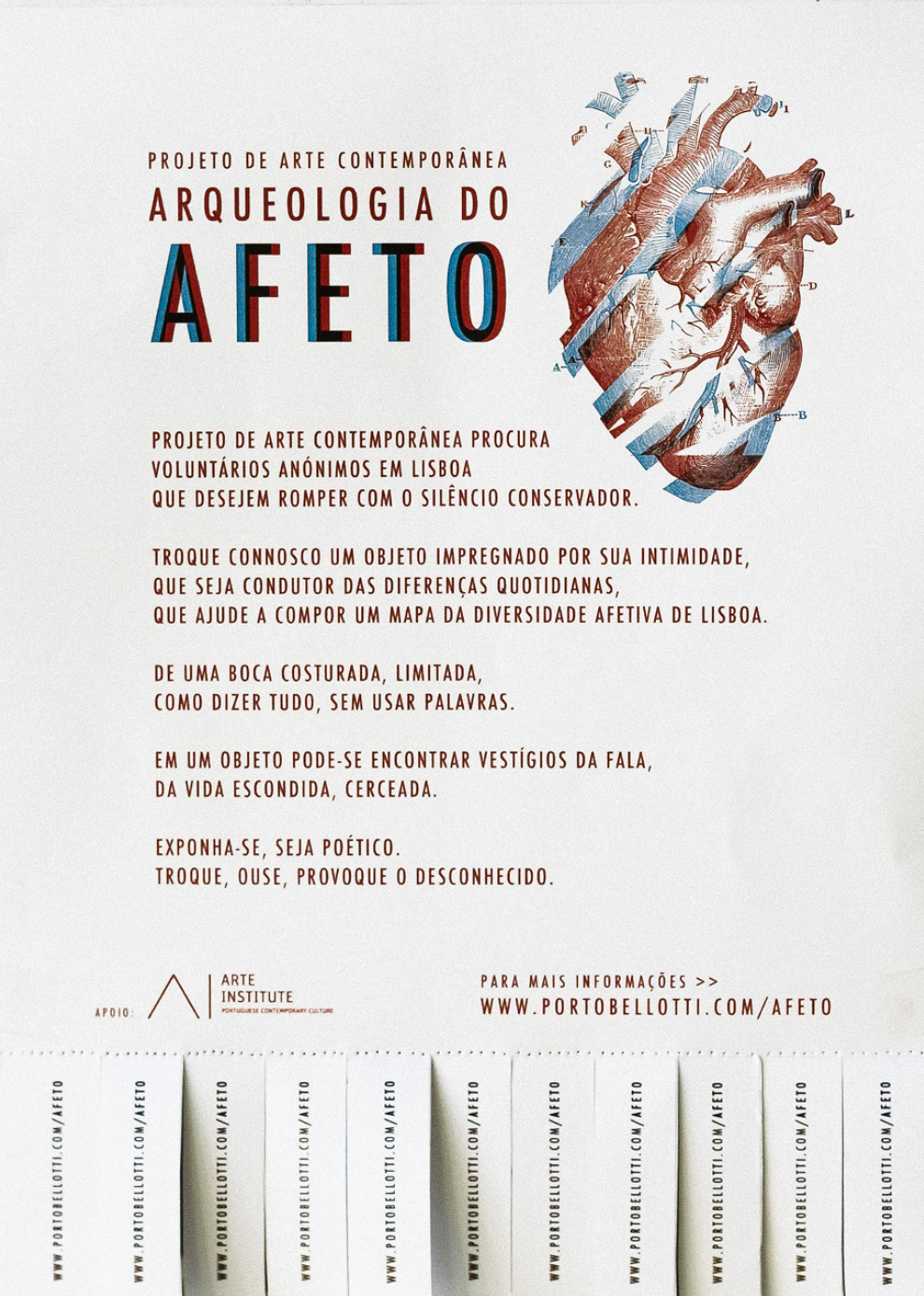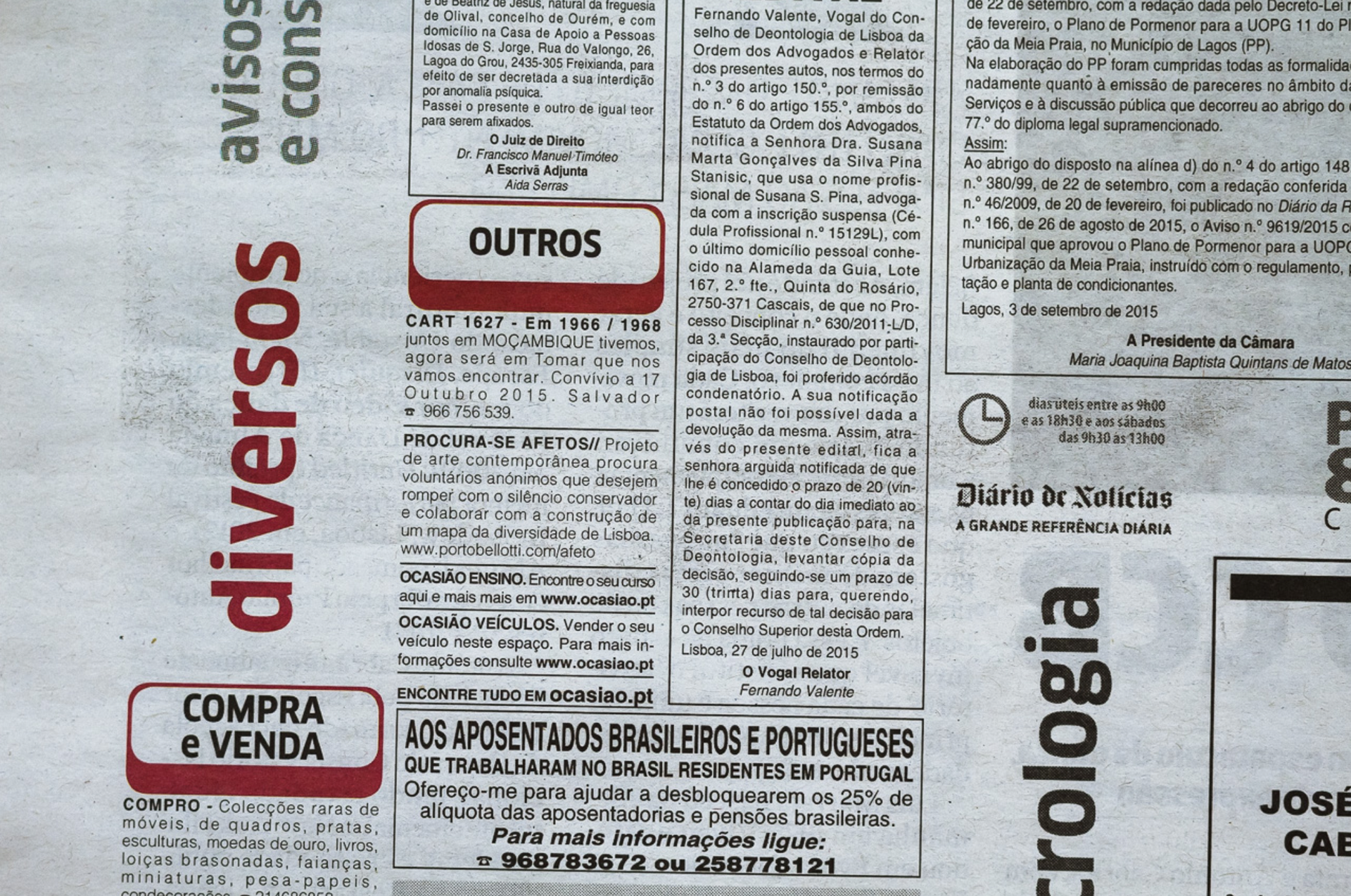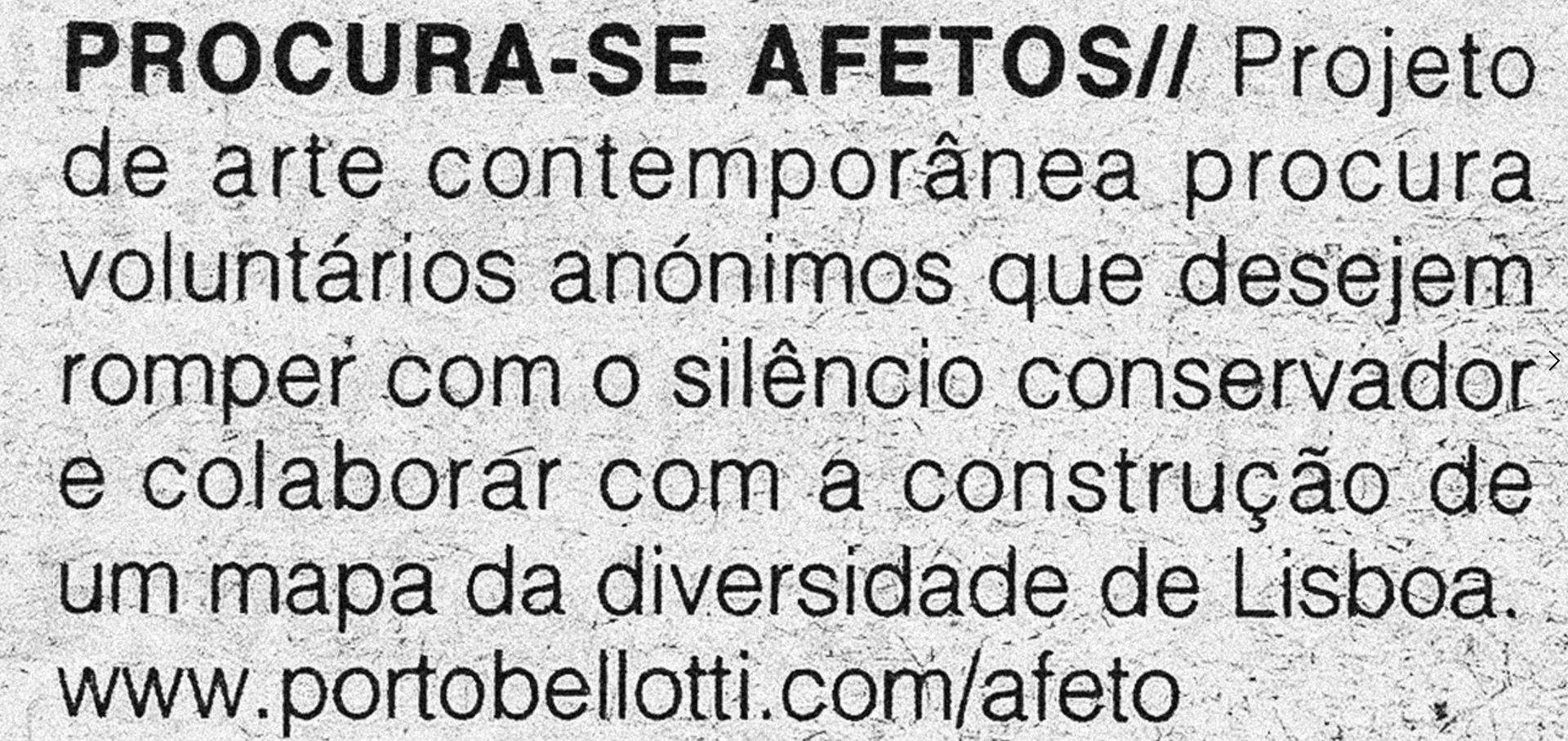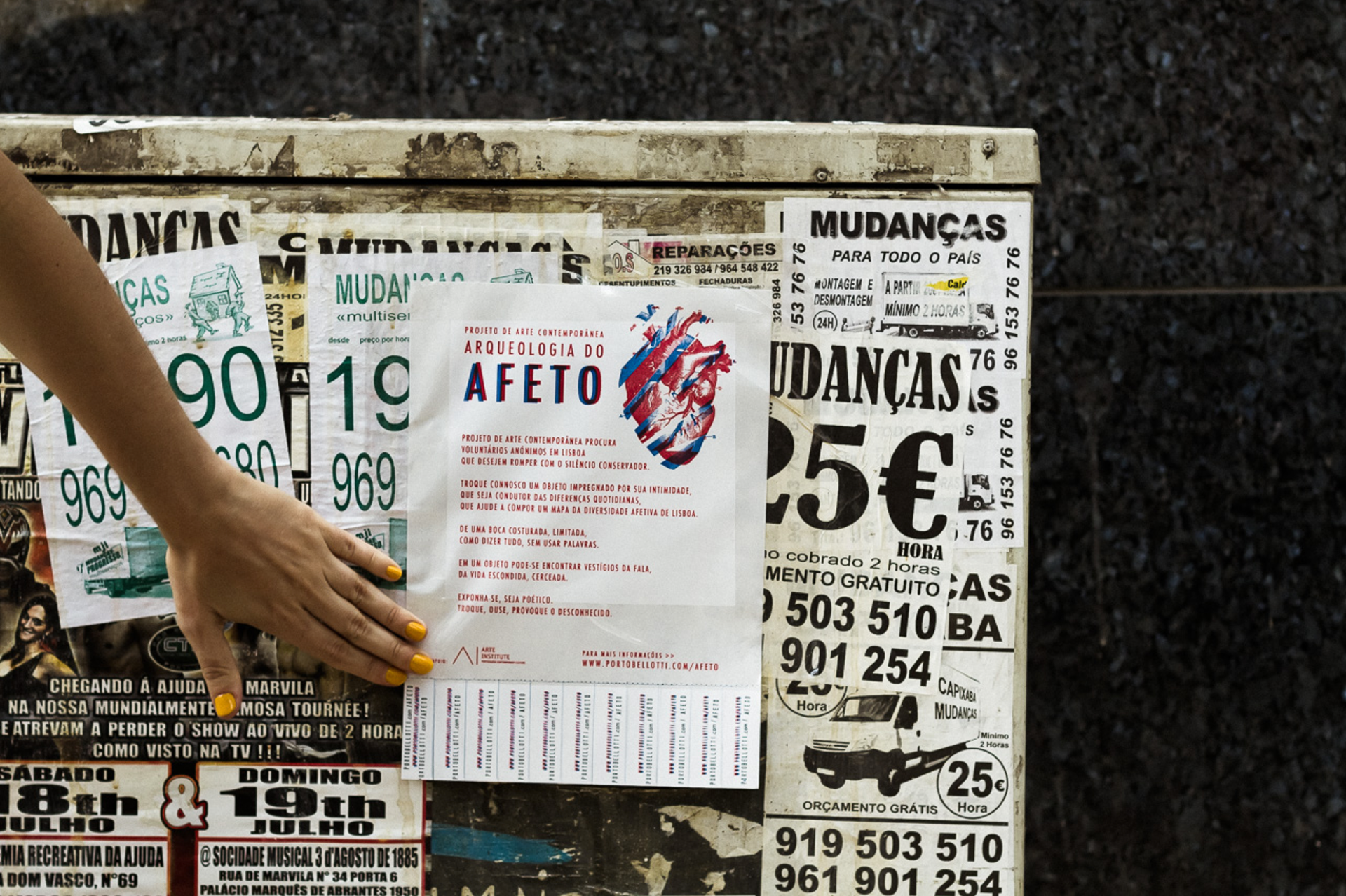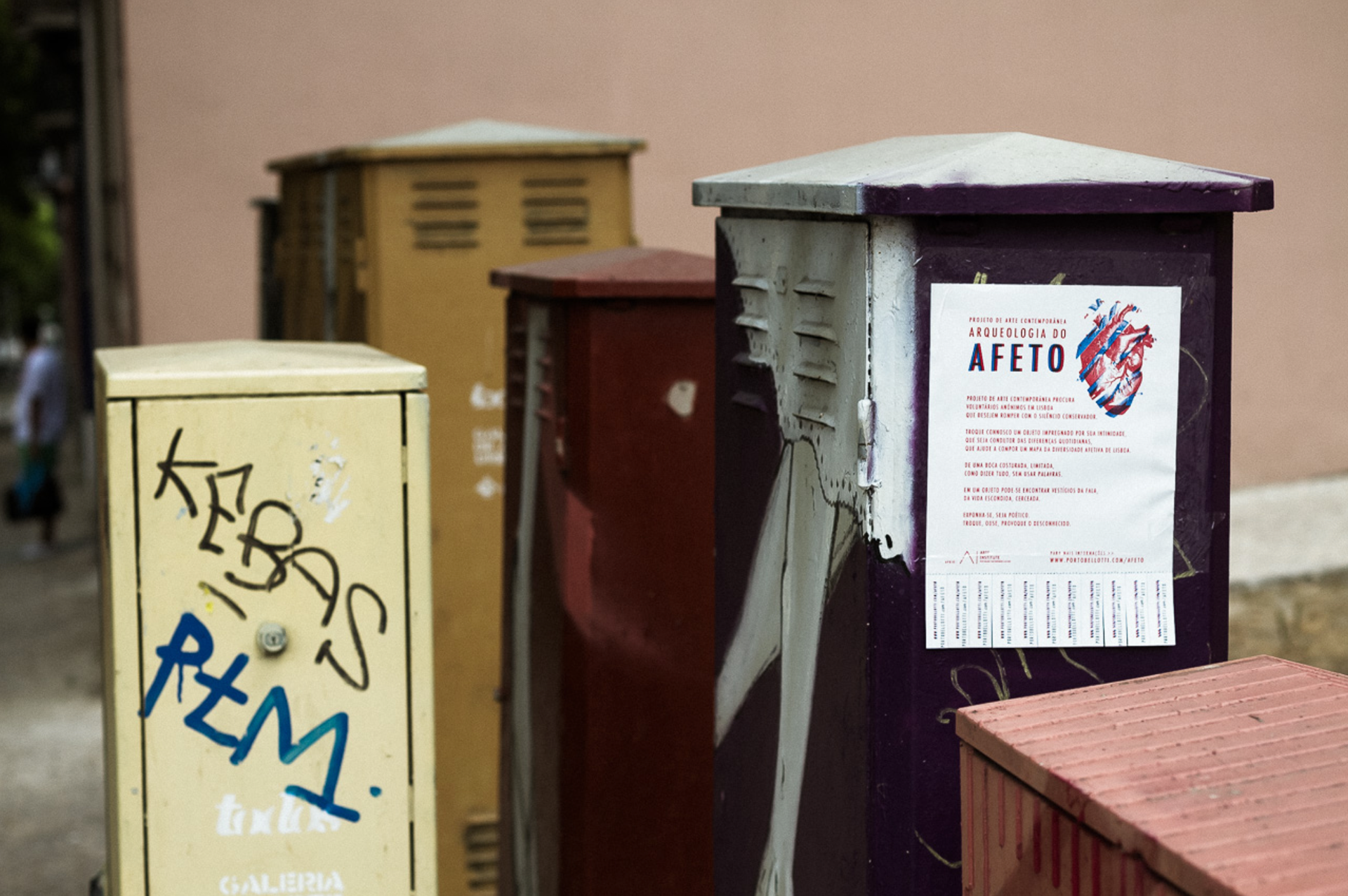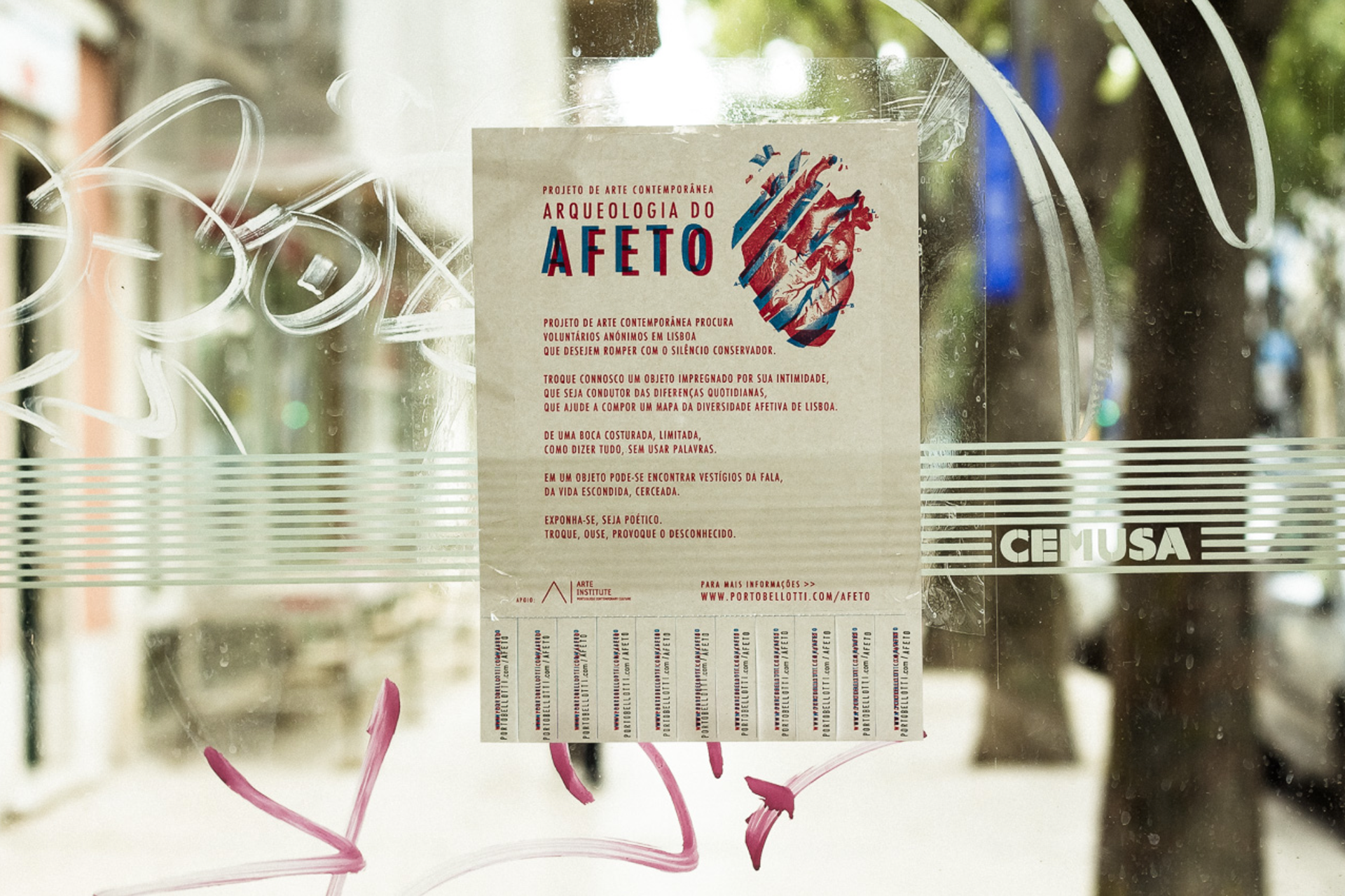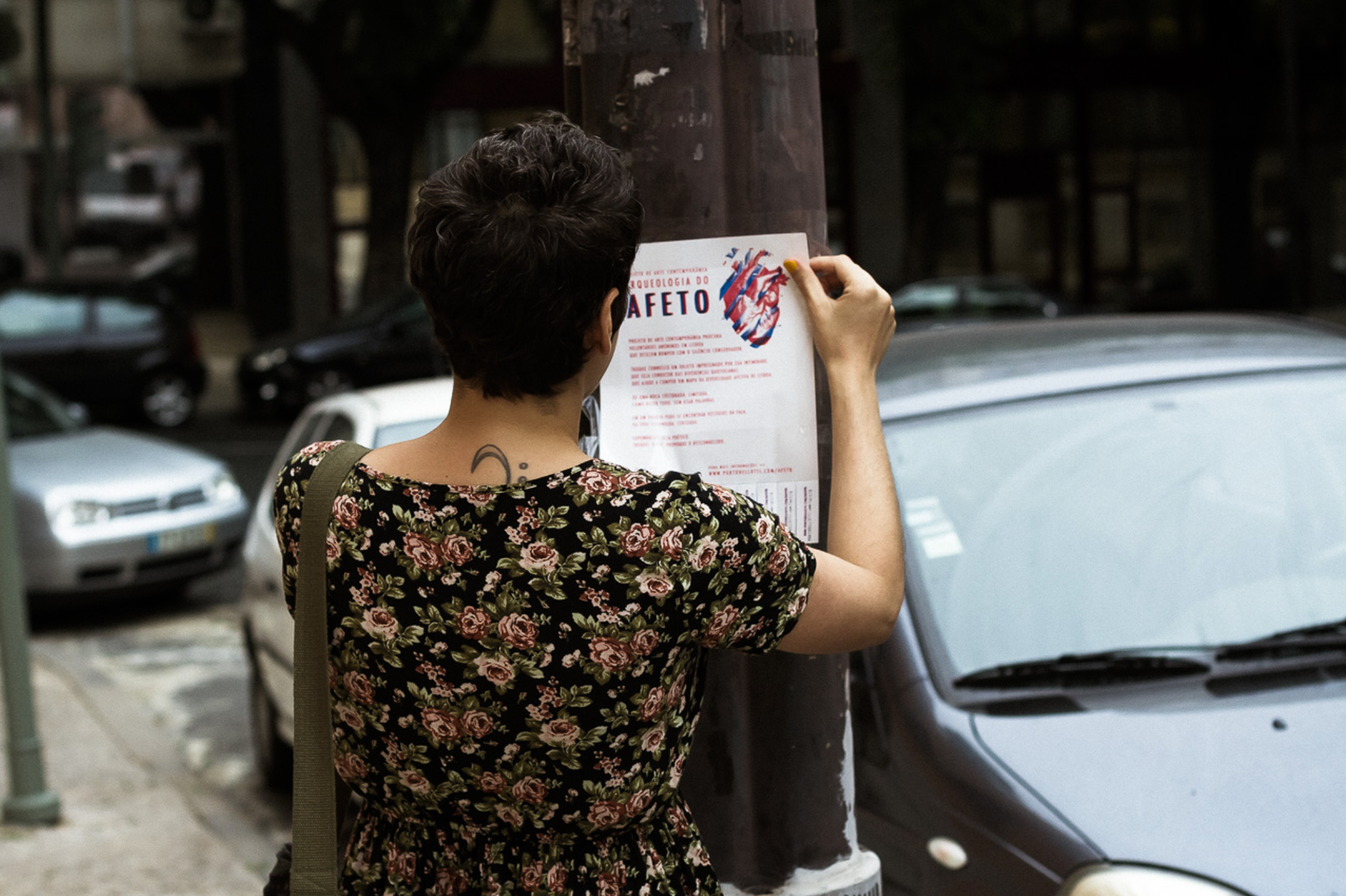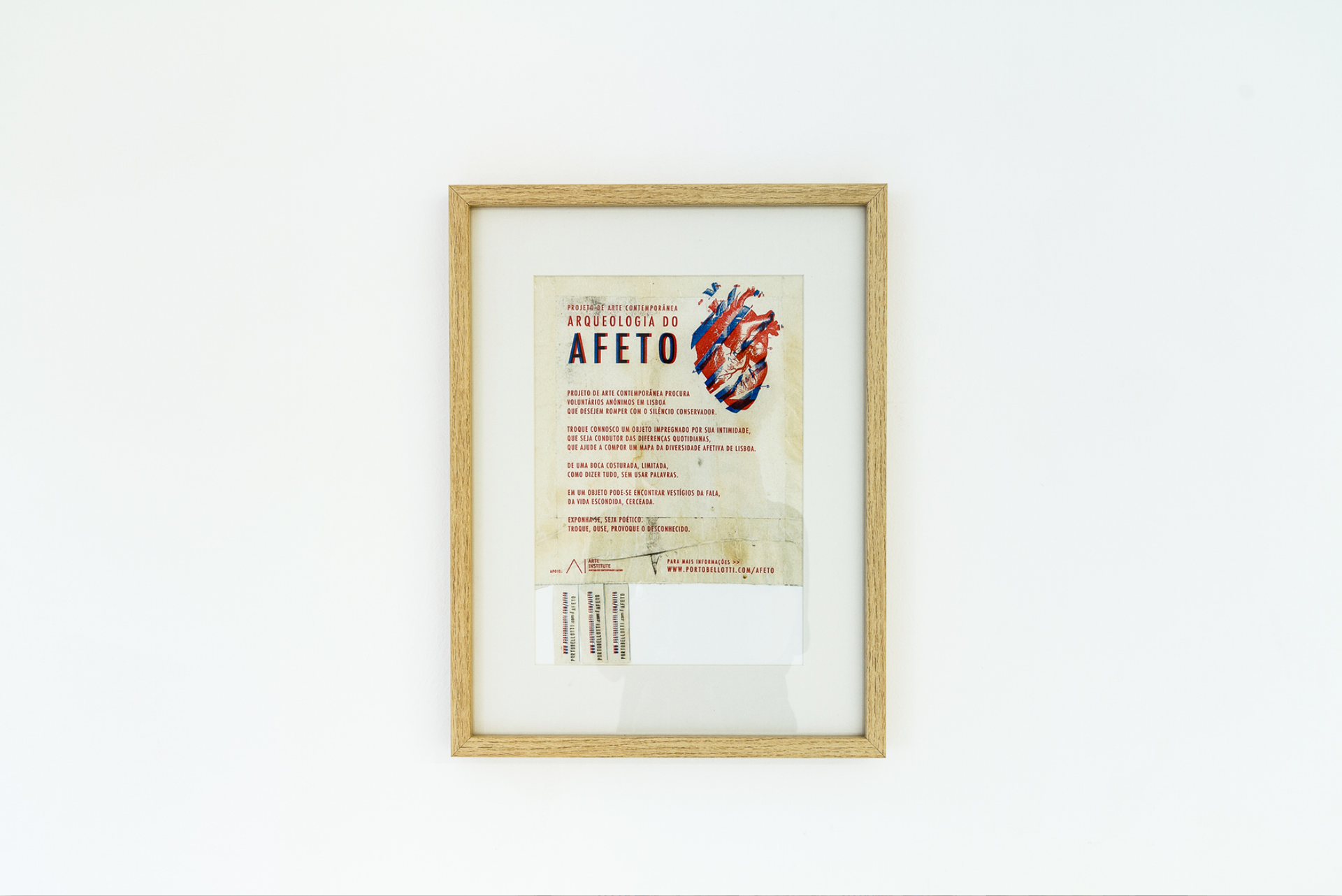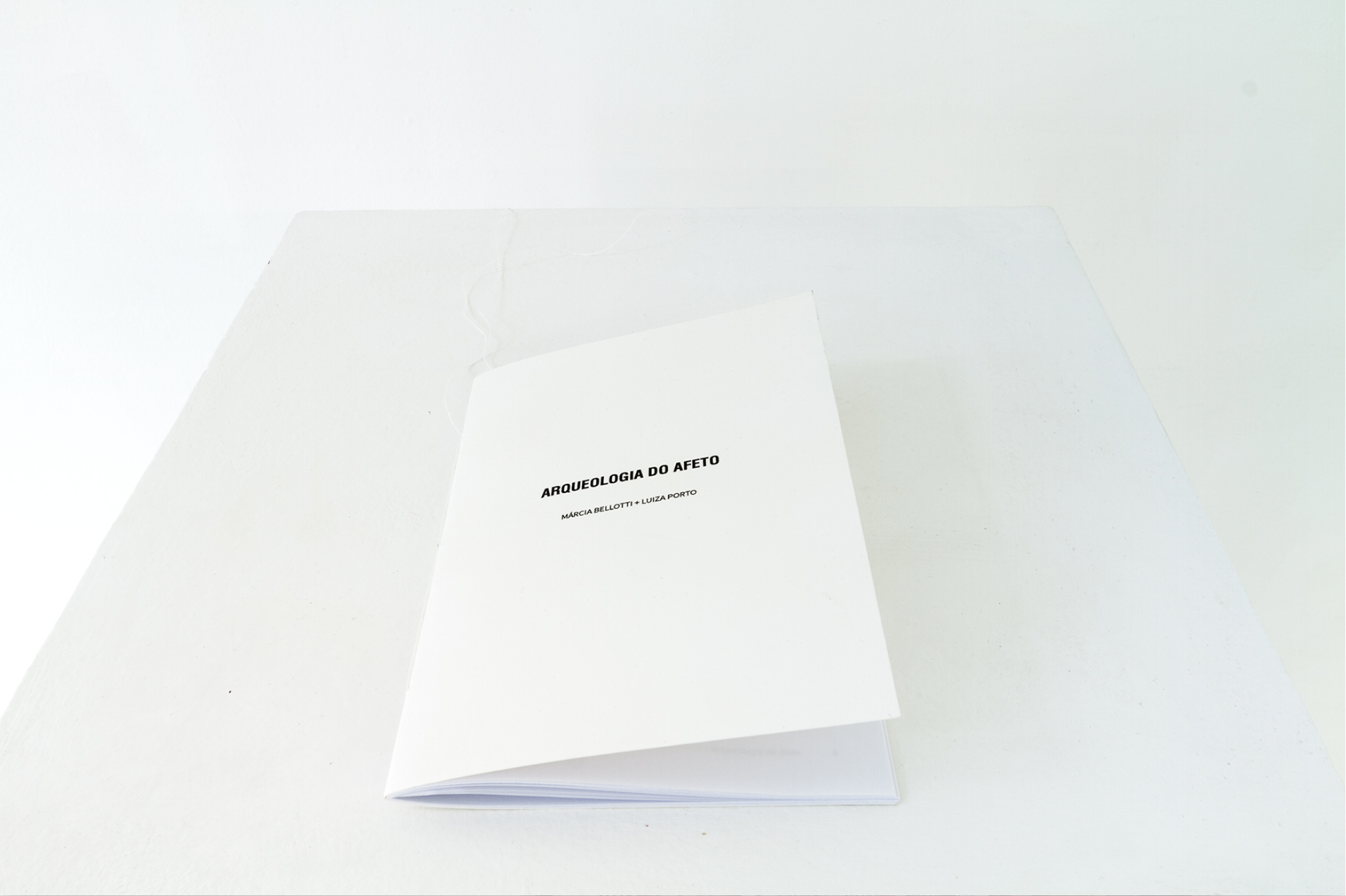"Archaeology of affection" (Arqueologia do Afeto) | Inicial research supported by Arte Institute | Lisbon, 2015
(EN) The main purpose of the "Archeology of Affection" project was to reach subtle aspects of the intimacy of Lisbon's inhabitants to create an affective map of the city and its diversity, and to build a social portrait based on the documentation of anonymous people´s intimacy. We sought to create random connections between anonymous volunteers, us, and art. Ultimately, we used the affective mapping of the city and our position as isolated social objects whilst immigrants as indispensable piece of the creative process.
Faced with the difficulty in accessing the intimacy of Lisbon´s inhabitants, we had to seek ways to work around the portuguese social conservatism. Instead of accessing the interior of the houses and looking for their stories (common practice in my artistic research), we sought for anonymous volunteers who should just send us a representative object of their own intimacy. In exchange, we would send back for those volunteers objects of our own intimacy as a couple. Our goal was to access and provoke the largest number of Lisbon inhabitants about possible intimate connections with unknown people (notably: women, artists, lesbians and Brazilian immigrants). For that we published four public advertisement in the printed newspaper "Diário de Notícias" in an attempt to dialogue with a conservative audience. We walked around the city putting up posters on poles, light boxes and bus stops, an endeavour to reach a random public. At least, we disclosed the project website through paid ads and shares on social networks through which we sought to reach an alternative audience.
To read the full project (in portuguese), please click at the link bellow:
https://www.scribd.com/document/372635187/Arqueologia-Do-Afeto-Marcia-Bellotti-Luiza-Porto
https://www.scribd.com/document/372635187/Arqueologia-Do-Afeto-Marcia-Bellotti-Luiza-Porto
(PT) O objetivo principal do projeto "Arqueologia do Afeto" foi alcançar camadas sutis da intimidade dos moradores de Lisboa, colaborando na construção de um mapa afetivo da diversidade da cidade e na formação de um retrato social através da documentação da intimidade voluntária de anônimos.
Buscamos construir conexões que possuíssem não somente graus de separação distantes, mas que também promovessem a aleatoriedade na formação de contatos entre voluntários anônimos, nós e a arte. Por fim, utilizamos o mapeamento afetivo da cidade e nossa percepção enquanto objetos sociais isolados na condição de imigrantes como peças fundamentais do processo criativo.
Para ler o projeto, por favor, clique no link abaixo:
https://www.scribd.com/document/372635187/Arqueologia-Do-Afeto-Marcia-Bellotti-Luiza-Porto
https://www.scribd.com/document/372635187/Arqueologia-Do-Afeto-Marcia-Bellotti-Luiza-Porto
